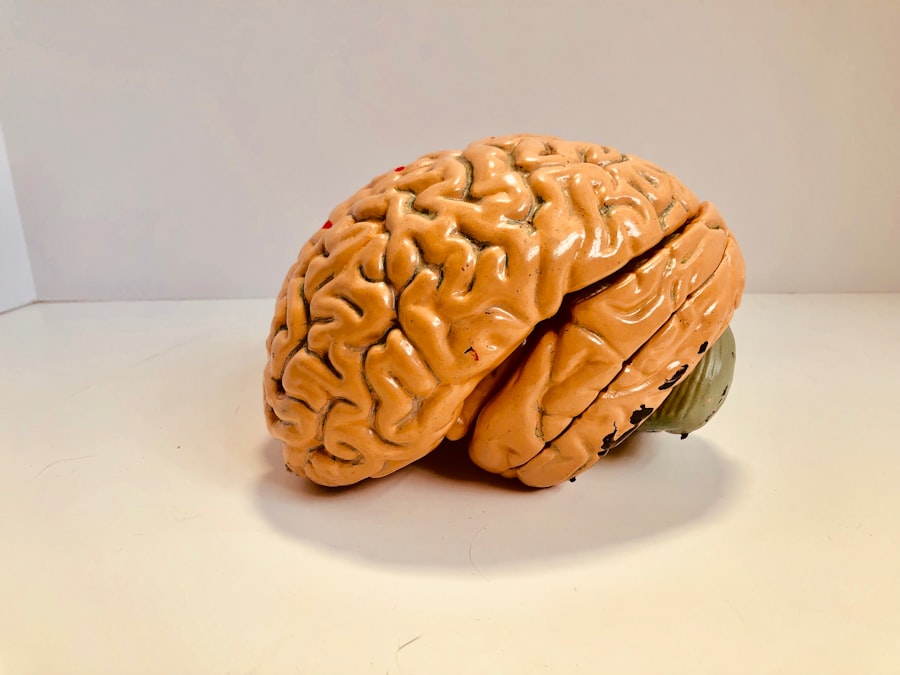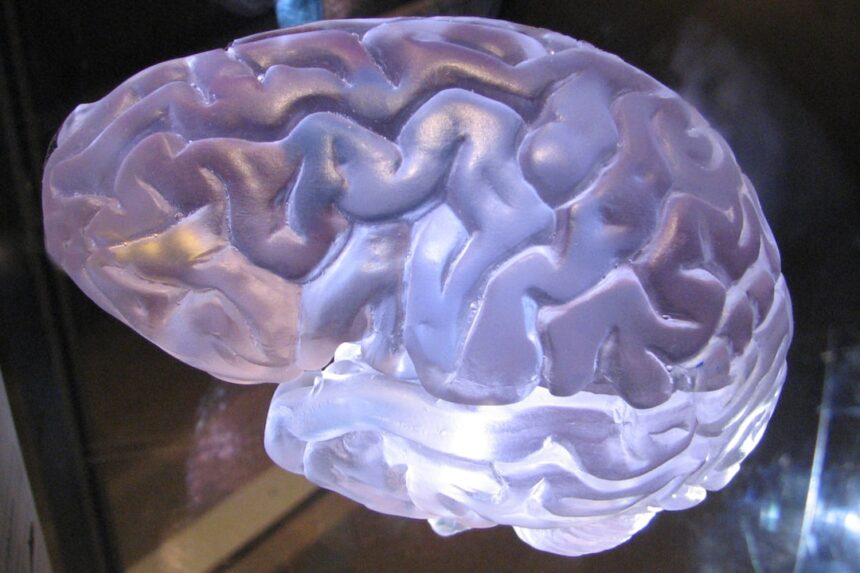Neuroplasticity is a fascinating concept that refers to the brain’s remarkable ability to reorganize itself by forming new neural connections throughout life. This adaptability means that your brain is not a static organ; rather, it is dynamic and capable of change in response to learning, experience, and even injury. When you engage in new activities or learn new skills, your brain rewires itself, creating pathways that enhance your cognitive abilities.
As you delve deeper into the concept of neuroplasticity, you may find it empowering to realize that your brain can change at any age. Whether you are a child learning to read or an adult picking up a new hobby, the potential for growth is always present.
This understanding can shift your perspective on learning and personal development, encouraging you to embrace challenges rather than shy away from them. By recognizing that your brain is capable of change, you can foster a mindset that values growth and resilience.
Key Takeaways
- Neuroplasticity is the brain’s ability to change and adapt throughout life, allowing for personal growth and development.
- Self-directed neuroplasticity empowers individuals to take control of their brain’s development and shape their own neural pathways.
- Techniques such as mindfulness, visualization, and cognitive behavioral therapy can be used to harness neuroplasticity for personal growth.
- Overcoming limiting beliefs and habits is possible through self-directed neuroplasticity, leading to improved mental health and well-being.
- Incorporating self-directed neuroplasticity into daily life can enhance learning, memory, cognitive function, and emotional regulation, ultimately leading to a healthier and more fulfilling life.
The Power of Self-directed Neuroplasticity: Taking Control of Your Brain’s Development
Self-directed neuroplasticity is the idea that you can actively influence the way your brain develops and functions. Unlike passive learning, where information is absorbed without much thought, self-directed neuroplasticity involves intentional practices that promote positive changes in your brain. This means you have the power to shape your thoughts, behaviors, and emotional responses through conscious effort.
By taking control of your brain’s development, you can create a more fulfilling and enriched life. To harness the power of self-directed neuroplasticity, you must first cultivate awareness of your thoughts and habits. This awareness allows you to identify patterns that may be holding you back or limiting your potential.
Once you recognize these patterns, you can begin to implement strategies that promote positive change. Whether it’s through mindfulness practices, cognitive restructuring, or engaging in new experiences, the key is to be proactive in shaping your brain’s development. By doing so, you empower yourself to break free from old habits and create a more positive mindset.
Harnessing Neuroplasticity for Personal Growth and Development

Harnessing neuroplasticity for personal growth involves understanding how your brain learns and adapts. You can leverage this knowledge to create an environment conducive to growth and development. For instance, setting specific goals and breaking them down into manageable steps can help your brain form new connections related to those objectives.
As you achieve these goals, your brain reinforces the pathways associated with success, making it easier for you to pursue further challenges. Moreover, engaging in activities that stimulate your brain—such as learning a new language or playing a musical instrument—can significantly enhance your cognitive abilities. These activities not only promote neuroplasticity but also provide a sense of accomplishment and fulfillment.
By consistently challenging yourself and stepping outside of your comfort zone, you can foster an environment where personal growth thrives. Remember, every small step you take contributes to the larger journey of self-improvement.
How to Train Your Brain: Techniques for Self-directed Neuroplasticity
| Technique | Description |
|---|---|
| Visualization | Mentally rehearsing an activity to improve performance |
| Brain Training Apps | Using apps to engage in cognitive exercises |
| Physical Exercise | Improving brain function through regular physical activity |
| Mindfulness Meditation | Training the brain to focus and reduce stress through meditation |
| Learning a New Skill | Challenging the brain by acquiring new knowledge or abilities |
Training your brain for self-directed neuroplasticity involves employing various techniques that encourage positive change. One effective method is mindfulness meditation, which helps you develop greater awareness of your thoughts and emotions. By practicing mindfulness regularly, you can learn to observe your mental patterns without judgment, allowing you to identify areas for improvement.
This heightened awareness can lead to more intentional choices in your daily life. Another technique is visualization, where you imagine yourself achieving specific goals or overcoming challenges. Visualization activates the same neural pathways as actual experiences, reinforcing the connections associated with success.
By regularly visualizing your desired outcomes, you can strengthen your belief in your abilities and increase motivation. Additionally, engaging in physical exercise has been shown to promote neuroplasticity by increasing blood flow to the brain and stimulating the growth of new neurons. Incorporating these techniques into your routine can significantly enhance your brain’s capacity for change.
Overcoming Limiting Beliefs and Habits through Neuroplasticity
Limiting beliefs and habits can hinder your personal growth and prevent you from reaching your full potential. However, through the principles of neuroplasticity, you can actively work to overcome these obstacles. The first step is recognizing the beliefs that hold you back—whether they stem from past experiences or societal conditioning.
Once identified, you can challenge these beliefs by reframing them into more empowering narratives. For example, if you believe that you’re not good at public speaking, you can reframe this belief by reminding yourself of past successes or acknowledging that skills can be developed over time with practice. By consistently challenging and reframing limiting beliefs, you create new neural pathways that support a more positive self-image.
Additionally, replacing negative habits with constructive ones requires conscious effort and repetition. As you practice new behaviors consistently, your brain will begin to favor these positive habits over time.
Using Self-directed Neuroplasticity to Improve Mental Health and Well-being

Self-directed neuroplasticity plays a crucial role in improving mental health and overall well-being. By actively engaging in practices that promote positive change, you can enhance your emotional resilience and reduce symptoms of anxiety or depression. Techniques such as gratitude journaling or positive affirmations can help shift your focus from negative thoughts to more uplifting perspectives.
This shift not only improves your mood but also strengthens the neural pathways associated with positivity. Moreover, engaging in social connections and nurturing relationships can significantly impact your mental health. Positive social interactions stimulate the release of neurotransmitters like oxytocin, which promotes feelings of trust and bonding.
By surrounding yourself with supportive individuals and engaging in meaningful conversations, you create an environment that fosters emotional well-being. Remember that taking small steps toward self-care and connection can lead to significant improvements in your mental health over time.
The Role of Neuroplasticity in Enhancing Learning and Memory
Neuroplasticity is fundamental to enhancing learning and memory processes. When you learn something new, your brain forms new connections between neurons, making it easier to recall information later on. This adaptability allows for continuous improvement in cognitive abilities throughout life.
To optimize learning experiences, consider employing techniques such as spaced repetition or active recall—methods that reinforce memory retention by revisiting information at intervals. Additionally, creating a stimulating learning environment can further enhance neuroplasticity. Engaging multiple senses during the learning process—such as incorporating visual aids or hands-on activities—can strengthen neural connections associated with the material being learned.
By actively participating in the learning process rather than passively absorbing information, you set the stage for deeper understanding and retention.
Self-directed Neuroplasticity and its Impact on Cognitive Function
The impact of self-directed neuroplasticity on cognitive function is profound. As you engage in practices that promote neuroplasticity, such as lifelong learning or mental exercises like puzzles and games, you enhance various cognitive abilities including problem-solving skills, critical thinking, and creativity. These activities stimulate different areas of the brain, encouraging the formation of new connections that support overall cognitive health.
Moreover, maintaining cognitive function as you age is essential for quality of life. Research suggests that individuals who actively engage their brains through challenging activities experience slower cognitive decline compared to those who do not. By prioritizing mental stimulation and embracing lifelong learning, you not only improve your cognitive function but also contribute to long-term brain health.
Neuroplasticity and Emotional Regulation: Managing Stress and Anxiety
Neuroplasticity plays a vital role in emotional regulation, particularly when it comes to managing stress and anxiety. Through self-directed practices such as mindfulness meditation or deep breathing exercises, you can train your brain to respond more effectively to stressors. These techniques help activate the parasympathetic nervous system, promoting relaxation and reducing anxiety levels.
Additionally, cognitive-behavioral strategies can aid in reframing negative thought patterns associated with stress or anxiety. By consciously challenging irrational beliefs and replacing them with more balanced perspectives, you create new neural pathways that support healthier emotional responses. Over time, these practices can lead to improved emotional regulation and resilience in the face of life’s challenges.
The Science Behind Self-directed Neuroplasticity: Research and Findings
The science behind self-directed neuroplasticity is supported by a growing body of research highlighting its effectiveness in promoting positive change. Studies have shown that engaging in mindfulness practices can lead to structural changes in the brain associated with improved emotional regulation and cognitive function. For instance, research using neuroimaging techniques has demonstrated increased gray matter density in areas related to memory and emotional processing among individuals who practice mindfulness regularly.
Furthermore, studies on skill acquisition reveal that deliberate practice enhances neuroplasticity by reinforcing neural pathways associated with specific skills. This research underscores the importance of consistent effort in achieving mastery over time. As more studies emerge on the topic of neuroplasticity, it becomes increasingly clear that our brains are capable of remarkable transformation through intentional practices.
Practical Tips for Incorporating Self-directed Neuroplasticity into Your Daily Life
Incorporating self-directed neuroplasticity into your daily life doesn’t have to be overwhelming; small changes can lead to significant results over time. Start by setting aside a few minutes each day for mindfulness meditation or deep breathing exercises—these practices can help cultivate awareness and promote relaxation. Additionally, consider engaging in activities that challenge your brain, such as puzzles or learning a new skill.
Another practical tip is to maintain a gratitude journal where you regularly reflect on positive experiences or accomplishments.
Lastly, surround yourself with supportive individuals who encourage growth and exploration; social connections play a crucial role in fostering an environment conducive to self-directed neuroplasticity.
By embracing these practical tips and committing to ongoing personal development, you empower yourself to harness the incredible potential of neuroplasticity for a more fulfilling life journey.
Self-directed neuroplasticity is a fascinating concept that explores how individuals can intentionally reshape their brain’s structure and function through focused mental practices. This idea is closely related to the broader field of psychology and mental health, where understanding the brain’s adaptability can lead to improved therapeutic techniques and personal development strategies. For those interested in delving deeper into the psychological aspects of neuroplasticity and its applications, an insightful article can be found on the Unplugged Psych website. You can read more about these topics by visiting their




